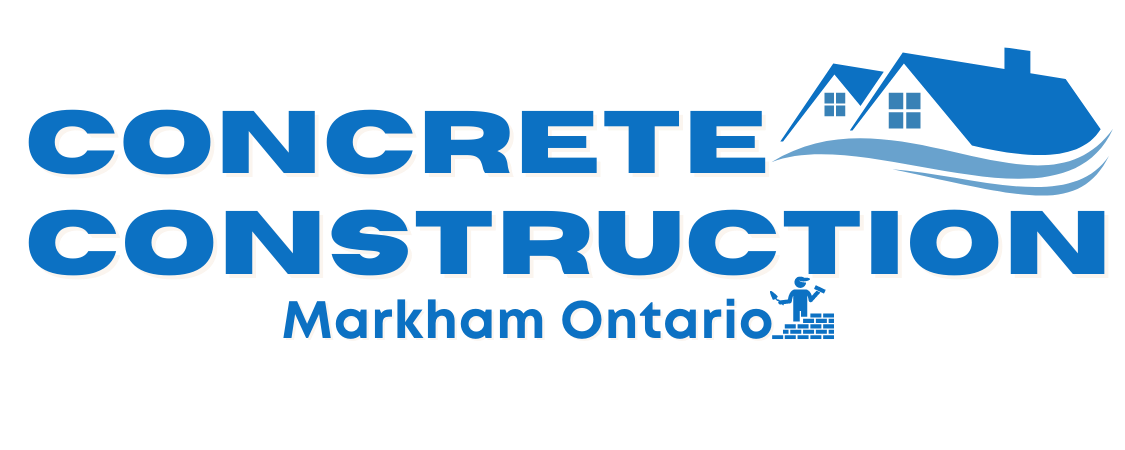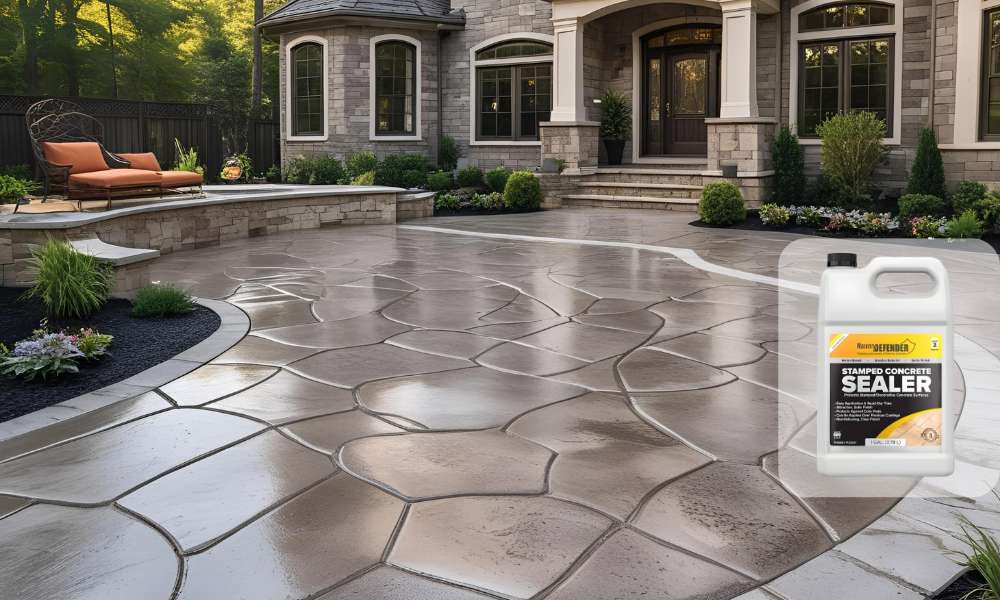Stamped concrete is a popular decorative technique where patterns and textures—such as brick, stone, or tile—are imprinted into freshly poured concrete to create a stylish and durable surface. While stamped concrete offers impressive visual appeal, it requires proper protection to maintain its look and strength over time. That’s where a concrete sealer for stamped concrete becomes essential. Applying the right sealer helps guard against moisture, stains, UV rays, and surface wear, significantly extending the life and beauty of your concrete.
In this guide, you’ll discover the best concrete sealers for stamped concrete, how to choose the right one for your specific needs, and step-by-step instructions for proper application. We’ll also share expert product recommendations, buying tips, and answers to frequently asked questions to help you make a confident, informed decision.
Why You Need a Sealer for Stamped Concrete
Sealing stamped concrete is essential for maintaining its beauty, durability, and longevity. A high-quality concrete sealer protects the surface from harsh weather conditions, oil stains, moisture, and damaging UV rays that can cause fading or discoloration over time. It also enhances the natural color, depth, and texture of stamped patterns, giving your concrete a vibrant, well-maintained appearance. Most importantly, sealing prevents surface wear, cracks, and erosion caused by traffic and environmental exposure, ensuring your decorative concrete looks great for years with minimal maintenance.
Types of Concrete Sealers for Stamped Concrete
Acrylic Sealers (Water-Based & Solvent-Based)
Acrylic sealers are among the most commonly used options for stamped concrete due to their affordability and ease of use. They create a thin protective film on the surface that enhances the concrete’s color and texture. Water-based acrylics are more environmentally friendly with lower VOC emissions, making them ideal for indoor use. Solvent-based versions offer a deeper, glossier finish but emit strong fumes during application. While acrylics provide good UV resistance and a decorative boost, they typically require reapplication every 1–3 years, especially in high-traffic or outdoor areas.
Penetrating Sealers (Silane/Siloxane)
Penetrating sealers are best suited for exterior stamped concrete surfaces like driveways, walkways, and patios. These sealers soak into the concrete rather than forming a surface layer, providing invisible protection against water, freeze-thaw cycles, and salt damage. They maintain the natural look of the concrete without adding shine or altering color. Although they don’t offer the decorative enhancement of other sealers, their long-lasting protection and low maintenance make them ideal for climates with harsh weather conditions.
Polyurethane Sealers
Polyurethane sealers offer a thicker, more durable coating than acrylics, making them excellent for high-traffic areas that require superior abrasion and chemical resistance. Available in both water-based and solvent-based formulations, these sealers deliver a long-lasting glossy finish that enhances the color of stamped concrete. While more expensive and slightly more difficult to apply, polyurethane provides superior protection and durability. It’s especially well-suited for indoor applications or decorative outdoor areas where aesthetics and long-term performance are a priority.
Epoxy Sealers
Epoxy sealers are known for their exceptional strength and glossy appearance, making them a popular choice for indoor stamped concrete in garages, basements, and commercial spaces. They create a hard, non-porous surface that resists chemicals, stains, and heavy traffic. However, epoxy is not UV-stable and may yellow or degrade when exposed to sunlight, so it’s generally not recommended for outdoor use unless top-coated with a UV-resistant layer. Application can be complex, requiring careful surface prep and experienced handling, but the result is a high-performance, durable finish.
Top 5 Best Concrete Sealers for Stamped Concrete (With Reviews)
Selecting the right concrete sealer is crucial for preserving and enhancing the appearance of stamped concrete surfaces. Below are five top-rated sealers, each offering unique benefits tailored to specific needs:
1. Foundation Armor AR350 – Best Overall
The Foundation Armor AR350 is a solvent-based acrylic sealer renowned for its ability to rejuvenate and protect stamped concrete surfaces. It imparts a low-gloss, wet-look finish that enhances color and provides resistance against UV rays, water, and stains. Users have praised its ease of application and the immediate visual improvement it offers. However, some have noted that it may require reapplication every 1–3 years, depending on exposure to elements.
2. EnduraSeal 100% Acrylic – Best for Glossy Finish
EnduraSeal’s 100% Acrylic Sealer delivers a semi-gloss, wet-look finish that accentuates the natural beauty of stamped concrete. It’s particularly effective on colored or decorative surfaces. While many users appreciate the vibrant finish, some have reported issues like white spots or streaks, especially if the surface isn’t properly prepared. Additionally, the sealer has a strong odor during application, which may be a consideration for indoor projects.
concretesealerreview.com
3. Ghostshield Lithi-Tek 9500 – Best Penetrating Sealer
For those seeking a non-film-forming option, Ghostshield’s Lithi-Tek 9500 is a penetrating sealer that strengthens and waterproofs concrete from within. It’s ideal for driveways and outdoor areas, offering protection against water, salts, and freeze-thaw cycles without altering the surface appearance. Users have highlighted its effectiveness in increasing surface durability and its ease of application.
4. Black Diamond Wet Look Stone Sealer – Best Wet Look Finish
Black Diamond’s Wet Look Stone Sealer is designed to provide a high-gloss finish that enhances the color and texture of stamped concrete. It’s water-based, making it a safer choice for indoor applications, and users have noted its ease of use and quick drying time. However, as with many high-gloss sealers, it can become slippery when wet, so incorporating a non-slip additive is recommended for areas exposed to moisture.
5. Tuff Duck Concrete Sealer – Best for Indoor Use
Tuff Duck’s Concrete Sealer is a water-based, food-safe option ideal for indoor stamped concrete surfaces like countertops and floors. It offers a satin finish that enhances the natural look of the concrete while providing protection against stains and water. Users have appreciated its low odor and ease of application. However, it’s worth noting that it may not withstand heavy abrasion, so it’s best suited for areas with moderate use.
How to Choose the Right Sealer for Stamped Concrete
Choosing the best sealer for stamped concrete depends on several important factors. Start by considering the location—outdoor surfaces need sealers with strong weather and UV resistance, while indoor areas may prioritize low odor and gloss options. Think about the finish you want: whether you prefer a natural matte look, a high-gloss shine, or a dramatic wet look, there’s a sealer to match your aesthetic. Weather resistance is crucial, especially in freeze-thaw climates where cracking can occur. Also, look for products that offer slip resistance to ensure safety, particularly on pool decks or patios. Finally, factor in the ease of application and maintenance—some sealers are DIY-friendly, while others may require professional application or frequent resealing. Balancing these factors will help you find the perfect match for your stamped concrete surface.
Step-by-Step Guide: How to Apply Sealer on Stamped Concrete
Tools and Materials Needed
Gather the following items:
- Concrete sealer (appropriate for your needs)
- Paint roller (⅜” to ½” nap) or sprayer
- Extension pole (if using a roller)
- Paint tray or sprayer tank
- Masking tape and plastic sheets (for nearby surfaces)
- Non-slip additive (optional for safety)
- Protective gloves and eye protection
Surface Preparation Tips
Begin by thoroughly cleaning the stamped concrete surface. Remove dirt, debris, oil stains, and any previous sealer residue using a concrete cleaner or degreaser. For best results, pressure washing is recommended. Allow the surface to dry completely—ideally for 24 hours—before applying the new sealer.
Application Process (Roller vs. Sprayer)
Choose your application method based on the type of sealer and the size of the area. Use a sprayer for large outdoor areas and a roller for smaller or indoor spaces. Apply the sealer in thin, even coats, working in small sections to avoid puddling. Wait for the first coat to dry (typically 2–4 hours) before applying a second coat if needed. Always follow the manufacturer’s instructions for best results.
Curing Time and Maintenance Tips
Allow the sealer to cure fully for 24–48 hours before foot traffic and up to 72 hours before placing furniture or vehicles on the surface. For ongoing maintenance, clean the surface regularly and reseal every 2–3 years, or as recommended by the product label, to keep your stamped concrete looking fresh and protected.
Read more: How to Remove Moss From Cement Patio
Conclusion
Choosing the right concrete sealer for stamped concrete is key to preserving both its beauty and durability. Whether you’re looking for a high-gloss finish, a natural look, or deep protection against weather and wear, our top picks—like the Foundation Armor AR350, Ghostshield Lithi-Tek 9500, and others—offer excellent performance for various needs and environments.
To keep your stamped concrete looking great for years, always clean the surface thoroughly before sealing, apply the correct amount, and reseal as needed based on traffic and exposure. Regular maintenance combined with the right product will ensure long-lasting protection and visual appeal.

